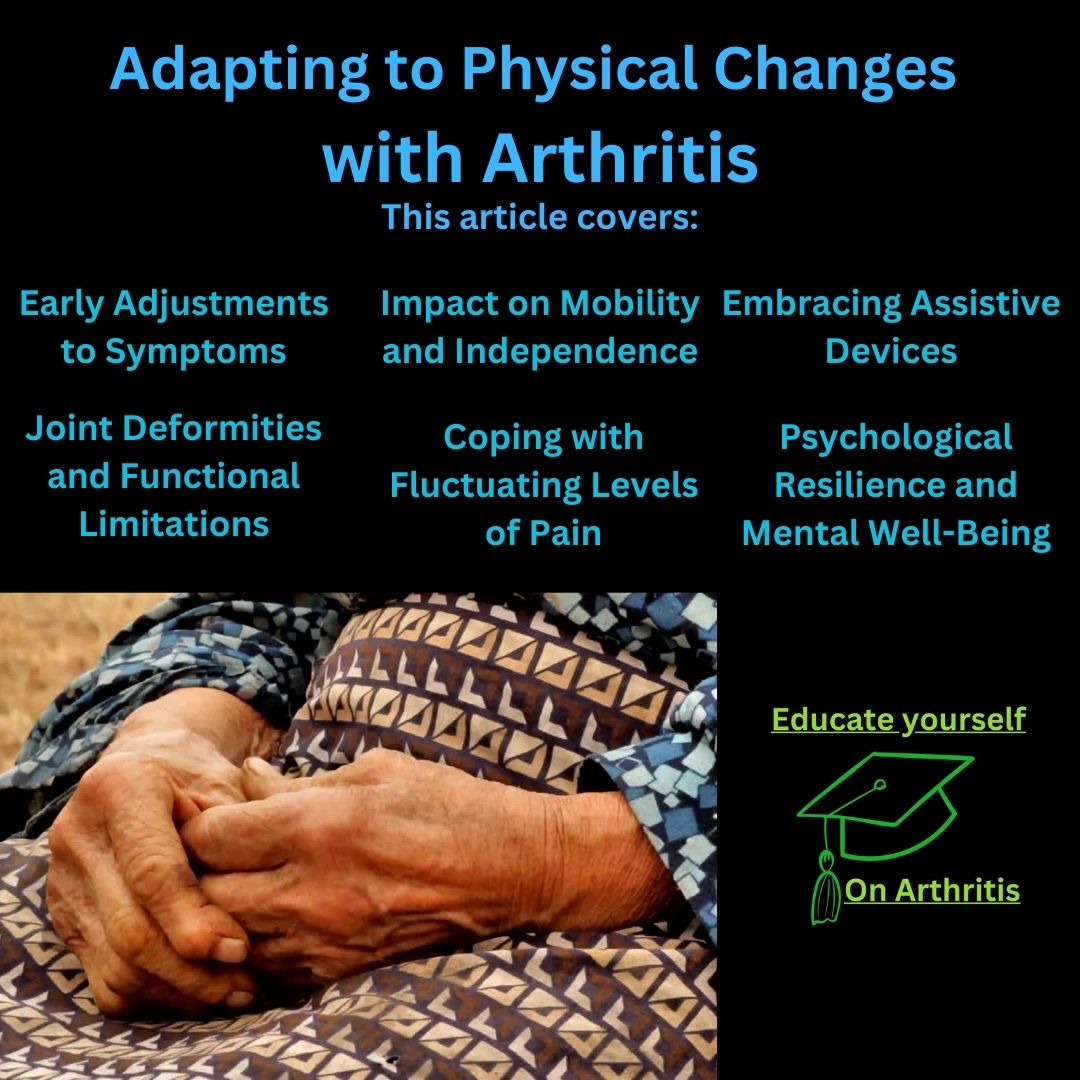
Adapting to Physical Changes with Arthritis
Introduction
Arthritis, a condition characterized by joint inflammation and stiffness, brings about a range of physical changes that significantly impact daily life. Adapting to these changes is a dynamic process that demands resilience, support, and proactive strategies to maintain overall well-being.
In the initial stages of arthritis, individuals face challenges in adapting to symptoms like joint pain, swelling, and stiffness. These changes can disrupt established routines, necessitating modifications to daily activities. Early adjustments involve recognizing symptoms, seeking diagnosis, and initiating dialogue with healthcare professionals to develop an effective management plan^[1].
Joint Deformities and Functional Limitations
As arthritis progresses, joint deformities and functional limitations may worsen. Adapting to changes in joint structure and mobility requires a multifaceted approach. This includes using assistive devices, practicing joint protection techniques, and engaging in tailored exercises to maintain or enhance functionality. Occupational therapy plays a pivotal role in optimizing daily activities and preserving independence^[2].
Impact on Mobility and Independence
Arthritis can profoundly affect mobility, making it difficult to walk, climb stairs, or engage in routine activities. Adapting involves exploring mobility aids, home modifications, and assistive technologies to enhance independence. Regular exercise tailored to preserve joint function helps mitigate mobility issues caused by arthritis^[3].
Coping with Fluctuating Levels of Pain
Chronic pain is a hallmark of arthritis, with individuals often navigating fluctuating pain levels. Pain management strategies like medications, physical therapy, and lifestyle adjustments become integral to adaptation. Developing effective coping mechanisms such as mindfulness and relaxation techniques empowers individuals to manage the emotional toll of persistent pain^[4].
Embracing Assistive Devices
Integrating assistive devices such as braces, canes, or orthopedic footwear is crucial in adapting to physical changes. Embracing these tools proactively helps maintain mobility and reduces strain on affected joints. Overcoming potential stigma associated with assistive devices involves fostering a positive mindset and reframing their use as empowering rather than limiting^[5].
Psychological Resilience and Mental Well-Being
Adapting to physical changes requires psychological resilience and a focus on mental well-being. The emotional impact of altered physical appearance, joint deformities, or mobility limitations can be significant. Seeking support from mental health professionals, participating in peer support groups, and practicing self-compassion contribute to holistic well-being^[6].
Role of Physical Therapy and Exercise
Physical therapy is central in supporting individuals as they adapt to physical changes caused by arthritis. Tailored exercise regimens, guided by healthcare professionals, enhance joint flexibility, muscle strength, and overall functional capacity. Regular exercise is key to fostering a sense of control over physical well-being^[7].
Collaborative Healthcare Approach
A collaborative healthcare approach involving rheumatologists, physical therapists, occupational therapists, and mental health experts enhances the adaptation process. Regular communication, adjustments to treatment plans, and ongoing support contribute to a comprehensive strategy for navigating the evolving landscape of arthritis^[8].
Conclusion
Adapting to physical changes associated with arthritis is an ongoing journey requiring resilience, proactive management, and a holistic approach to well-being. Embracing assistive tools, prioritizing mental health, and engaging in collaborative healthcare contribute to positive and empowered adaptation to arthritis challenges.
- Arthritis Foundation. (n.d.). Living with arthritis.
- American Occupational Therapy Association. (n.d.). Occupational therapy’s role in arthritis management.
- Centers for Disease Control and Prevention. (2020). Arthritis and physical activity.
- National Institute of Arthritis and Musculoskeletal and Skin Diseases. (2017). Living with arthritis: Health information basics for you and your family.
- Arthritis Society. (n.d.). Assistive devices for arthritis.
- The Mayo Clinic. (2021). Chronic pain: Establishing a psychological mindset.
- American Physical Therapy Association. (n.d.). Physical therapy for arthritis.
- Arthritis Research UK. (n.d.). The multidisciplinary team in arthritis care.


